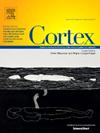Information processing in the Hand Laterality Judgement Task: Fundamental differences between dorsal and palmar views revealed by a “forced response” paradigm
IF 3.2
2区 心理学
Q1 BEHAVIORAL SCIENCES
引用次数: 0
Abstract
Imagining performing movements (motor imagery) has broad applications from fundamental neuroscience to sports and rehabilitation. However, measuring motor imagery ability is challenging due to its covert nature. While the Hand Laterality Judgement Task (HLJT) has been investigated as a measure of implicit motor imagery ability, our understanding of mechanisms underlying performance of the task is limited. We used a ‘forced response’ paradigm to study the time-course of information processing in the HLJT. Participants (N = 54) performed a modified HLJT where the time they had to process the stimulus was manipulated on a trial-by-trial basis, allowing us to reconstruct the time-course of information processing. Generalised Additive Mixed Models assessed the relationship between processing time and accuracy, which varied across rotation angles (0°–180° in 45° steps), hand views (dorsal or palmar) or directions (medial or lateral). Stimulus rotation substantively increased the time needed to produce a correct response, although this effect was non-monotonic. Computational modelling confirmed a crucial interaction between hand view and rotation angle, identifying fundamental differences in processing for palmar stimuli with more extreme rotations (≥135°) compared to other stimuli. Finally, a ‘biomechanical constraints’ effect (i.e., faster processing of medial versus laterally rotated stimuli) was present in both views, but was only statistically significant in palmar views, again suggesting differences in processing palmar and dorsal stimuli. These results improve our understanding of the cognitive processes underlying the HLJT and may have broader importance for our understanding of mental processes implicated in motor imagery.
手侧度判断任务中的信息处理:由“强迫反应”范式揭示的背侧和掌侧视角的根本差异
想象表演动作(运动意象)具有广泛的应用,从基础神经科学到运动和康复。然而,由于其隐蔽性,测量运动想象能力是具有挑战性的。虽然手侧度判断任务(HLJT)已被研究作为内隐运动想象能力的衡量标准,但我们对该任务表现的机制的理解有限。我们使用“强迫反应”范式来研究HLJT中信息处理的时间过程。参与者(N = 54)进行了一项改进的HLJT,其中他们处理刺激的时间是在逐个试验的基础上进行的,这使我们能够重建信息处理的时间过程。广义加性混合模型评估了加工时间和精度之间的关系,其在旋转角度(45°步骤中0°-180°)、手视图(背侧或掌侧)或方向(内侧或外侧)上变化。刺激旋转大大增加了产生正确反应所需的时间,尽管这种效应是非单调的。计算模型证实了手视角和旋转角度之间的重要相互作用,确定了与其他刺激相比,更极端旋转(≥135°)的手掌刺激在处理上的根本差异。最后,两种视角都存在“生物力学约束”效应(即对内侧旋转刺激的处理速度比侧向旋转刺激快),但仅在掌侧视角上具有统计学意义,再次表明掌侧和背侧刺激的处理存在差异。这些结果提高了我们对HLJT背后的认知过程的理解,并可能对我们理解与运动意象有关的心理过程具有更广泛的重要性。
本文章由计算机程序翻译,如有差异,请以英文原文为准。
求助全文
约1分钟内获得全文
求助全文
来源期刊

Cortex
医学-行为科学
CiteScore
7.00
自引率
5.60%
发文量
250
审稿时长
74 days
期刊介绍:
CORTEX is an international journal devoted to the study of cognition and of the relationship between the nervous system and mental processes, particularly as these are reflected in the behaviour of patients with acquired brain lesions, normal volunteers, children with typical and atypical development, and in the activation of brain regions and systems as recorded by functional neuroimaging techniques. It was founded in 1964 by Ennio De Renzi.
 求助内容:
求助内容: 应助结果提醒方式:
应助结果提醒方式:


